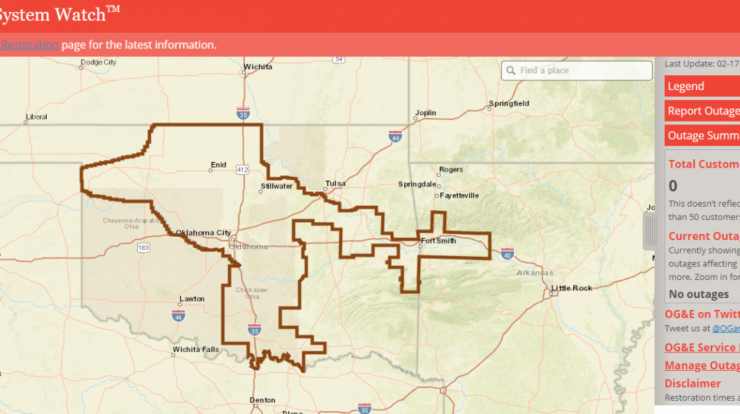
The OGE System Watch, a powerful tool for system monitoring, provides organizations with real-time visibility into their IT infrastructure, enabling them to proactively identify and resolve issues before they impact business operations.
With its comprehensive features, the OGE System Watch empowers IT teams to maintain optimal system performance, ensure data integrity, and strengthen their overall security posture.
Introduction to the OGE System Watch

The OGE System Watch is a comprehensive monitoring and analysis solution designed to provide organizations with real-time visibility into their IT systems and infrastructure. It offers a wide range of capabilities, including system event monitoring, data analysis, reporting, and integration with other systems.
For those who enjoy the thrill of combat sports, how to watch bare knuckle fighting is a popular question. This brutal sport is gaining popularity, and there are several ways to catch the action. Similarly, how to watch BKFC is a common query for fans of the Bare Knuckle Fighting Championship.
This organization hosts some of the most exciting bare-knuckle fights in the world.
Key features of the OGE System Watch include:
- Real-time monitoring of system events
- Comprehensive data analysis capabilities
- Customized reporting and visualization tools
- Integration with other systems, such as SIEM and ticketing systems
By utilizing the OGE System Watch, organizations can gain valuable insights into their IT systems, identify potential issues, and improve overall performance and security.
Planning a watch party for the Lakers game ? Make sure to stay updated on weather alerts, so you know whether it’s a watch or warning . If you’re looking for some action, consider tuning into bare-knuckle fighting or BKFC . Whatever you choose, make sure you have the right equipment to watch the action clearly.
Components and Architecture of the OGE System Watch
Components
The OGE System Watch is composed of several key components, including:
- Agents: Installed on individual systems, agents collect and transmit system events to the central server.
- Central Server: Receives and processes system events, performs data analysis, and generates reports.
- Web Console: Provides a user interface for accessing and managing the OGE System Watch.
Architecture
The OGE System Watch follows a centralized architecture, with agents deployed on individual systems and a central server responsible for data processing and analysis. The data flow within the system is as follows:
- Agents collect system events and transmit them to the central server.
- The central server processes the events and stores them in a database.
- The central server performs data analysis and generates reports.
- Users access the OGE System Watch through the web console to view reports and manage the system.
- Encrypted communication between agents and the central server
- Role-based access control to the web console
- Regular security updates and patches
- Selecting which system events to monitor
- Setting up alerts and notifications
- Customizing reporting templates
- Deploy agents on all critical systems.
- Configure the system to monitor all relevant system events.
- Establish clear alert and notification thresholds.
- Regularly review and analyze system reports.
- Keep the OGE System Watch up-to-date with the latest security patches.
- System performance metrics (e.g., CPU usage, memory usage, disk space)
- Application logs
- Security events (e.g., failed login attempts, malware detections)
- Network traffic
- Identify and troubleshoot system issues
- Monitor system performance and identify trends
- Detect and respond to security threats
- Comply with regulatory requirements
Security, Oge system watch
The OGE System Watch implements several security measures to protect data and systems, including:
Deployment and Configuration of the OGE System Watch
Deployment
The OGE System Watch can be deployed in a variety of environments, including on-premises, cloud, and hybrid. The deployment process involves installing agents on individual systems and configuring the central server.
Configuration
Once deployed, the OGE System Watch can be configured to meet the specific needs of an organization. Configuration options include:
Best Practices
To ensure optimal performance and effectiveness, consider the following best practices when implementing and managing the OGE System Watch:
Monitoring and Analysis of System Events
The OGE System Watch monitors a wide range of system events, including:
The OGE System Watch analyzes these events to identify potential issues, such as performance bottlenecks, security breaches, and application errors.
Organizations can use the OGE System Watch to:
Reporting and Visualization of System Data
The OGE System Watch provides a variety of reporting and visualization tools to help organizations analyze system data and identify trends.
Reporting
The OGE System Watch offers customizable reporting capabilities, allowing organizations to generate reports on specific system events, performance metrics, and security incidents.
When it comes to weather alerts, it’s important to understand the difference between a watch or warning . A watch means that conditions are favorable for a storm, while a warning means that a storm is imminent or already occurring.
Knowing the difference can help you stay safe in severe weather.
Visualization
The OGE System Watch includes several visualization tools, such as charts, graphs, and dashboards, to help organizations visualize system data and identify trends.
By leveraging the reporting and visualization capabilities of the OGE System Watch, organizations can gain valuable insights into their IT systems and infrastructure.
Integration with Other Systems: Oge System Watch
The OGE System Watch can be integrated with other systems, such as SIEM (Security Information and Event Management) systems and ticketing systems, to enhance security and efficiency.
Integration with SIEM systems allows the OGE System Watch to forward security events to the SIEM for further analysis and correlation.
Integration with ticketing systems allows the OGE System Watch to automatically create tickets for system issues, streamlining the incident response process.
Catching a Lakers game watch is a great way to connect with fellow fans and cheer on your team. Whether you’re at home or at a bar, there’s no better way to experience the excitement of the game. And if you’re wondering whether a watch or warning is worse, it all depends on the severity of the situation.
A watch means that conditions are favorable for a storm, while a warning means that a storm is imminent or already occurring.
By integrating the OGE System Watch with other systems, organizations can improve their overall security posture and operational efficiency.
Wrap-Up
In conclusion, the OGE System Watch is an indispensable tool for organizations seeking to enhance their IT infrastructure management. Its robust monitoring capabilities, customizable reporting, and seamless integration with other systems empower IT teams to proactively address potential issues, ensuring business continuity and maximizing operational efficiency.
FAQs
What are the key benefits of using the OGE System Watch?
The OGE System Watch offers numerous benefits, including enhanced security, improved system performance, proactive issue identification, customizable reporting, and seamless integration with other systems.
How does the OGE System Watch ensure data security?
The OGE System Watch employs robust security measures to protect data, including encryption, role-based access controls, and regular security updates.
What types of system events can be monitored using the OGE System Watch?
The OGE System Watch can monitor a wide range of system events, including application errors, hardware failures, security breaches, and performance issues.





